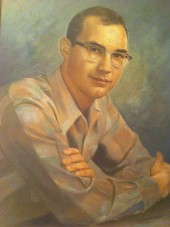 January 10, 2009.
January 10, 2009.
Perhaps some rich queer will someday give money for a national history of the movement, bringing in a timeline the work done all over, most of which people in other areas did not know about. NACHO was an attempt at communication and cooperation but it failed.
But it does seem at a glance that Gay New York and the start of Gay L.A. show that the same things were happening at the same time, with I assume no communication, just doing naturally, such as drag queens and balls. And I think Tracy Baim’s book, Out and Proud in Chicago, shows the same timeline. I know of no coverage of New Orleans, but it is clear that it has similar history and did not join the movement till very late.
I think it is clear that even in the same area, some people and groups were working without knowledge or coordination with others. And the most uninteresting part of Gay L. A. is the mere listing of all the specialized groups that now have started since the ’90s. How strange that one group, such as Pacific Islands/Asians have broken into three or four different groups. Can specialization go too far?
I think history will seek to find out how Barak Obama got where he is, who backed him, the tactics, etc. I believe it is equally important to know how our movement got where it is, and I believe that soon marriage will also be achieved, even though many of us have no interest in it as we likewise have no interest in religious groups or even gay bars, etc.
But it must be explained how the first hope, Hawaii, turned out to be a false start, etc. There is much to learn. As many have said, it probably takes all of the above tactics (marching, education, working with others, etc.) to get us our civil rights. Just a new law, without society really liking it, will not get us a very good comfort level.
And I still believe that Don Slater’s and other pioneers’ view is right, that the first item should be the right to privacy — no government should be allowed to ask us about our private life, sexual proclivity, religious beliefs, or even race.
And I do continue to hope that homosexuals traveling to a new place are interested not only in the gay bar or hotel but would want to go to a church, if they are religious, or see the gay center, or know of a gay playhouse, and visit the archives showing the history of how, for instance, L.A., or New York got from the terrible places they were for us then to where they are today.
And if you are going to list non-gay places such as museums, why not good non-gay eating places, such as Philippes in L.A. and, even though I find them less than good, the local papers in L.A. such as Frontiers and IN should be used as a resource for current events. And certainly a gay bookstore should get mentioned as they need our support.
And on the other hand, why are we not fussing at such resources aimed at our community, as Logo, which are doing nothing for our movement but exploit us as consumers?

